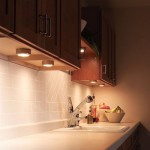We may receive a commission when you use our affiliate links. However, this does not impact our recommendations.
But definitely one of the top 10
Here at Popular Woodworking we take care of our own shop and build our own projects. Unlike other magazines, we don’t have a “shop manager” or “project craftsman.” We design, build and photograph our own stuff, and when the time comes for routine maintenance on our machinery, we are the ones who do it. But we don’t always do it right away, and like many busy people we put off chores like changing the knives in the planer until we absolutely have to. The other day I ran head-on into the difference between “check engine soon” and “check engine NOW.”

I only had a few pieces of white oak to thickness, and figured I could get by until the people who ran LVL through the planer would feel guilty enough to change the knives. As I checked the pieces coming out with my calipers I noticed that the thickness was incredibly inconsistent. I was getting about 1/16″ variation from piece to piece. I ran a few more pieces to try to find the trouble spot and stalled out the motor. This is a 20″ planer that can take a big bite, so I decided it was time to investigate. When I removed the cover from the planer, I noticed the black and gray chips you can see in the photo above.

Then I noticed the condition of the knives. In the photo above, you can see the dull but still shiny portion of a knife on the left turn to a dark blunt object on the right. As I was examining the wreckage a couple coworkers happened by and we discussed the gray and black chips, and tried to determine what they were. Our first theory was the glue in the LVL, but we knew (and had a photograph) that the knives were basically OK at that time. And then a rather meek voice said “I think they might be paint chips”.

It seems that the temptation to run a few boards through the planer instead of stripping them of paint proved overpowering. At first glance, that doesn’t sound like a bad idea; what could it hurt? One of the pigments used in modern paint, especially since lead isn’t used anymore, is titanium dioxide. As you can see in the photo above, it’s a pretty tough material. In the cage match between titanium and steel, titanium wins. I learned this lesson by running some primed trim through a shaper and trashing the cutter several years ago. Look for a blog entry next week on changing planer knives (as soon as the new set of knives arrive) from the unnamed perpetrator who learned this just the other day.
Here are some supplies and tools we find essential in our everyday work around the shop. We may receive a commission from sales referred by our links; however, we have carefully selected these products for their usefulness and quality.









Great story, Robert. Reminds me of someone who was dumb enough to ruin the blades on his brand new Powermatic jointer when he used it to clean up a few edges of some plywood. Oh, wait a minute. Oh, yes, that was me!
I’ve found that when planing bad surfaces it helps to get into scrub pane mode i.e. take out a deep cut. Then the planer blades are coming from clean wood <i>up through</i> the paint and crud, instead of cutting along the paint layer thickness.
Can’t wait to see Chris’ installment on changing planer knives. 🙂